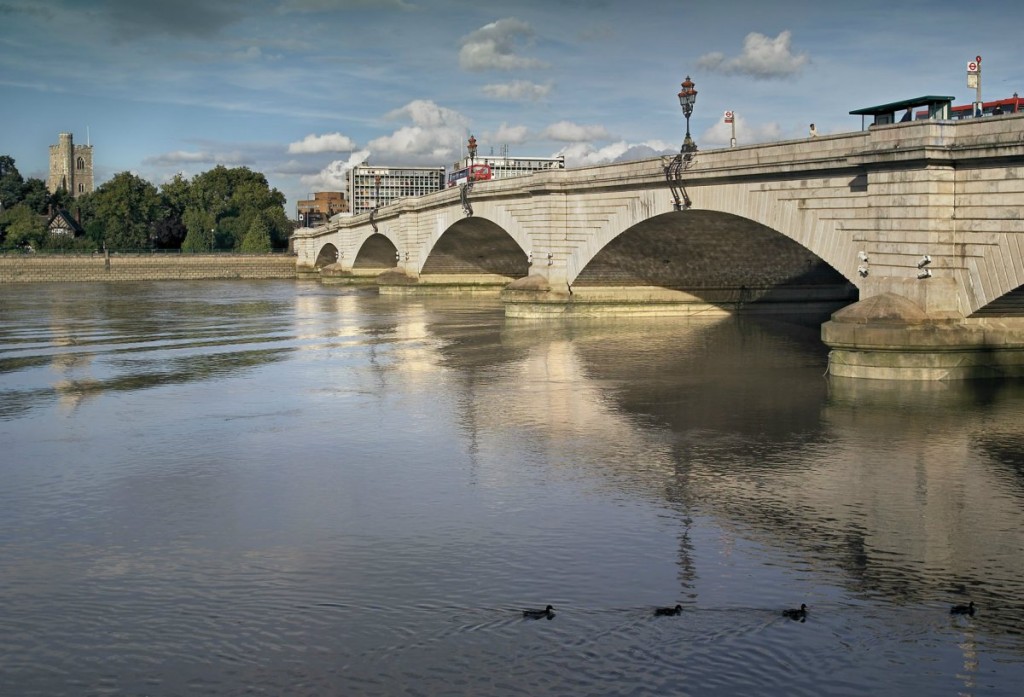Putney Bridge
The Putney Bridge will be closed to all vehicle traffic on July 14th for urgent repairs. It will remain closed for approximately three months. During this period pedestrians and cyclists will still be able to cross it but cyclist will need to dismount and wheel them across. The decision to close the bridge to all traffic – instead of a partial closure – was backed by a clear majority of both residents and businesses during the public consultation last year. The public’s preferred option was getting the job done in the shortest possible time and at the lowest cost to taxpayers. The works are needed after a study found that the bridge’s waterproof membrane, which protects the internal structure from water penetration, needs replacing. The installation of a new membrane should prevent the problems caused by water penetration, which experts say has contributed to the poor road surface despite continuous repairs. The council’s transport spokesman Councillor Jonathan Cook said: “Unfortunately a major repair like this to a busy river crossing means there will be disruption to the travelling public and we would like to apologise for the inconvenience this will cause – but we have pushed hard to keep this to the absolute minimum and ensured the works are carried out at a time of the year when the roads are at their quietest. However, the repairs are absolutely necessary to protect the bridge’s internal fabric and structural integrity. Our primary goal now is to get this important task done quickly and efficiently.”
THE HISTORY OF PUTNEY BRIDGE
It’s said that in 1720 Sir Robert Walpole was returning from seeing George I at Kingston on Thames and being in a hurry to get to the House of Commons rode together with his servant to Putney to take the ferry across to Fulham. The ferry boat was on the opposite side, however and the waterman, who was drinking in the Swan, ignored the calls of Sir Robert and his servant and they were obliged to take another route. It was then that Walpole vowed that a bridge would replace the ferry. The then Prince of Wales was also often inconvenienced by the ferry when returning from hunting in Richmond Park and asked Walpole to use his influence by supporting the building of a bridge. The legal framework for construction of a bridge was approved by an Act of Parliament in 1726. Built by local master carpenter Thomas Phillips to a design by architect Sir Jacob Acworth, the first bridge was opened in November 1729, to become the only bridge between London Bridge and Kingston Bridge at the time. It was a toll bridge and made of wood; it had tollbooths at either end of the timber-built structure. The bridge was badly damaged by the collision of a river barge in 1870. Although part of the bridge was subsequently replaced, soon the entire bridge was demolished, and in 1886 was replaced by the stone bridge that stands today. The Metropolitan Board of Works purchased the bridge in 1879, discontinued the tolls in 1880, and set about its replacement. The current bridge was designed by civil engineer Sir Joseph Bazalgette as a five-span structure, built of stone and Cornish granite. Bazalgette also designed London’s sewerage system, and the bridge integrates two of his five outfall sewers running perpendicular to it. It was constructed by John Waddell of Edinburgh, whose tender of £240,433 was accepted on 15 April 1882. It is 700 feet long and 43 feet wide, and was opened by the Prince and Princess of Wales on 29 May 1886. Putney Bridge unique, because it is the only bridge in Britain to have a church at both ends, St. Mary’s Church, Putney is located on the south and All Saints Church, Fulham on the north bank.




